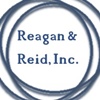Insights from the 1970s to 2023
Understanding the historical trends in commercial mortgage rates is crucial for investors and stakeholders in the commercial real estate sector. Over the past few decades, many economic factors have influenced commercial mortgage rates, ranging from inflation and monetary policy to global events such as the COVID-19 pandemic.
This article delves into the average commercial mortgage rates from the 1980s to 2023, providing insights into the evolution of borrowing costs in the commercial real estate market.
The 1980s: High Volatility and Double-Digit Rates
The 1980s were marked by economic volatility and sky-high interest rates. Double-digit inflation and the Federal Reserve’s efforts to curb inflation led to commercial mortgage rates exceeding 10%. During periods of economic turmoil, rates skyrocketed from 15% to 20%, making borrowing prohibitively expensive for many investors.
The 1990s: Gradual Decline and Economic Stabilization
As the economy stabilized in the 1990s, commercial mortgage rates gradually declined. With inflation under control, rates ranged from around 7% to 10%. This decade saw a resurgence in commercial real estate activity as borrowing costs became more manageable for investors.
The 2000s: Low Rates and the Housing Bubble
The early to mid-2000s witnessed relatively low commercial mortgage rates, hovering around 6% to 8%. However, as the housing bubble burst and the financial crisis unfolded, rates began to rise. Despite the turmoil, rates remained relatively moderate compared to previous decades.
The 2010s: Historic Lows and Post-Crisis Recovery
Throughout much of the 2010s, commercial mortgage rates remained historically low. In the aftermath of the financial crisis, central banks implemented accommodative monetary policies, driving rates down to levels ranging from 4% to 6%. This environment encouraged borrowing and investment in commercial real estate, supporting the sector’s recovery.
The 2020s: Pandemic Impact and Record Lows
The onset of the COVID-19 pandemic in the early 2020s brought unprecedented challenges to the global economy. In response, central banks implemented emergency measures, leading to a sharp decline in commercial mortgage rates. Rates briefly dipped below 3% for certain types of commercial loans, providing much-needed relief for borrowers amidst economic uncertainty.
Conclusion:
From the turbulence of the 1980s to the record lows of the 2020s, the trajectory of commercial mortgage rates has mirrored broader economic trends and policy responses. While historical averages offer valuable insights, investors and stakeholders need to consider current market conditions and individual circumstances when evaluating borrowing costs. As we navigate the future of commercial real estate, understanding the historical context of mortgage rates can inform strategic decision-making and risk management in this dynamic sector.
Contact a member of our team to discuss your next Commercial Real Estate Investments!
Author: Jerry Williams
Commercial Real Estate. Sales, Leasing & Management

